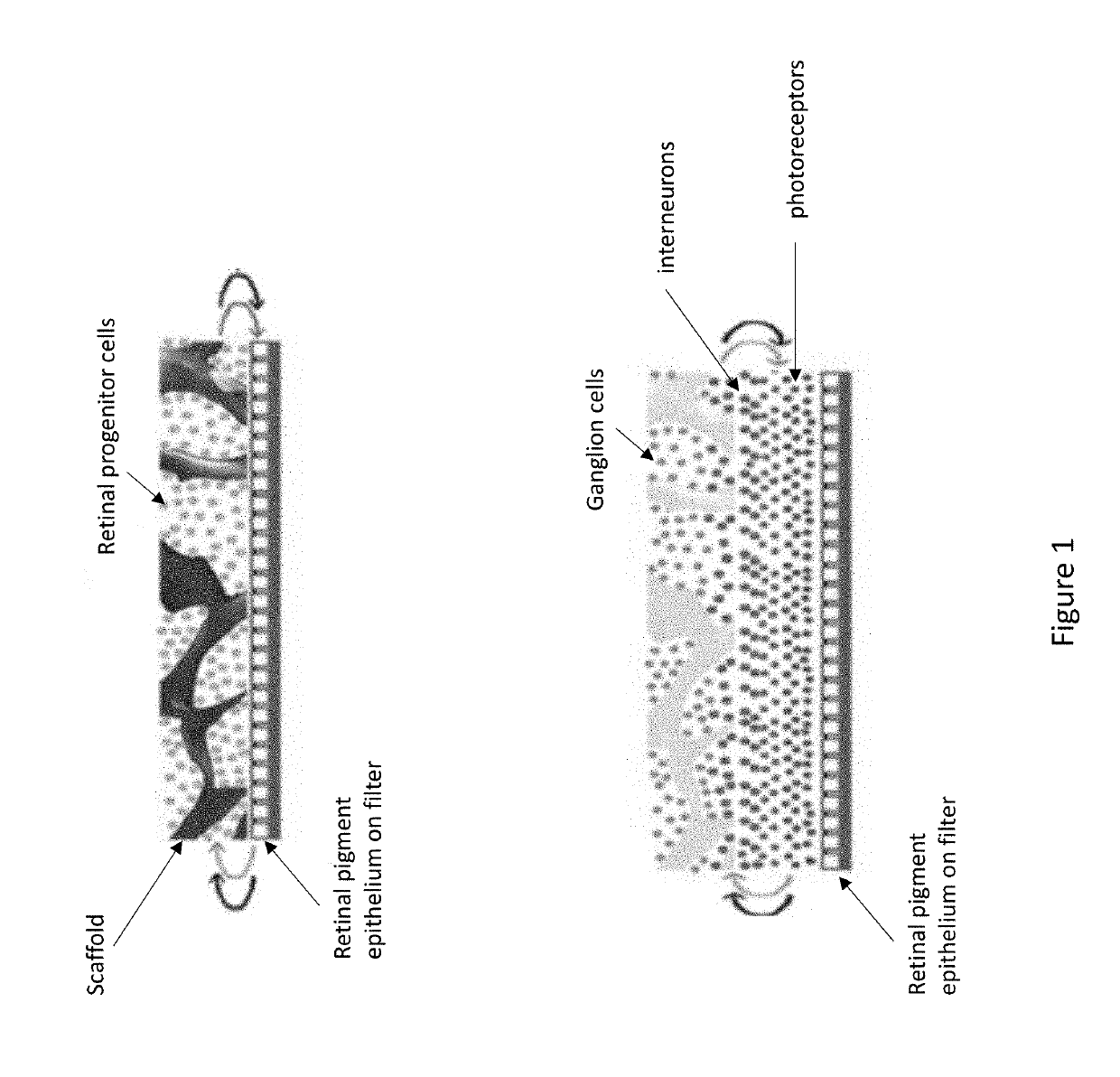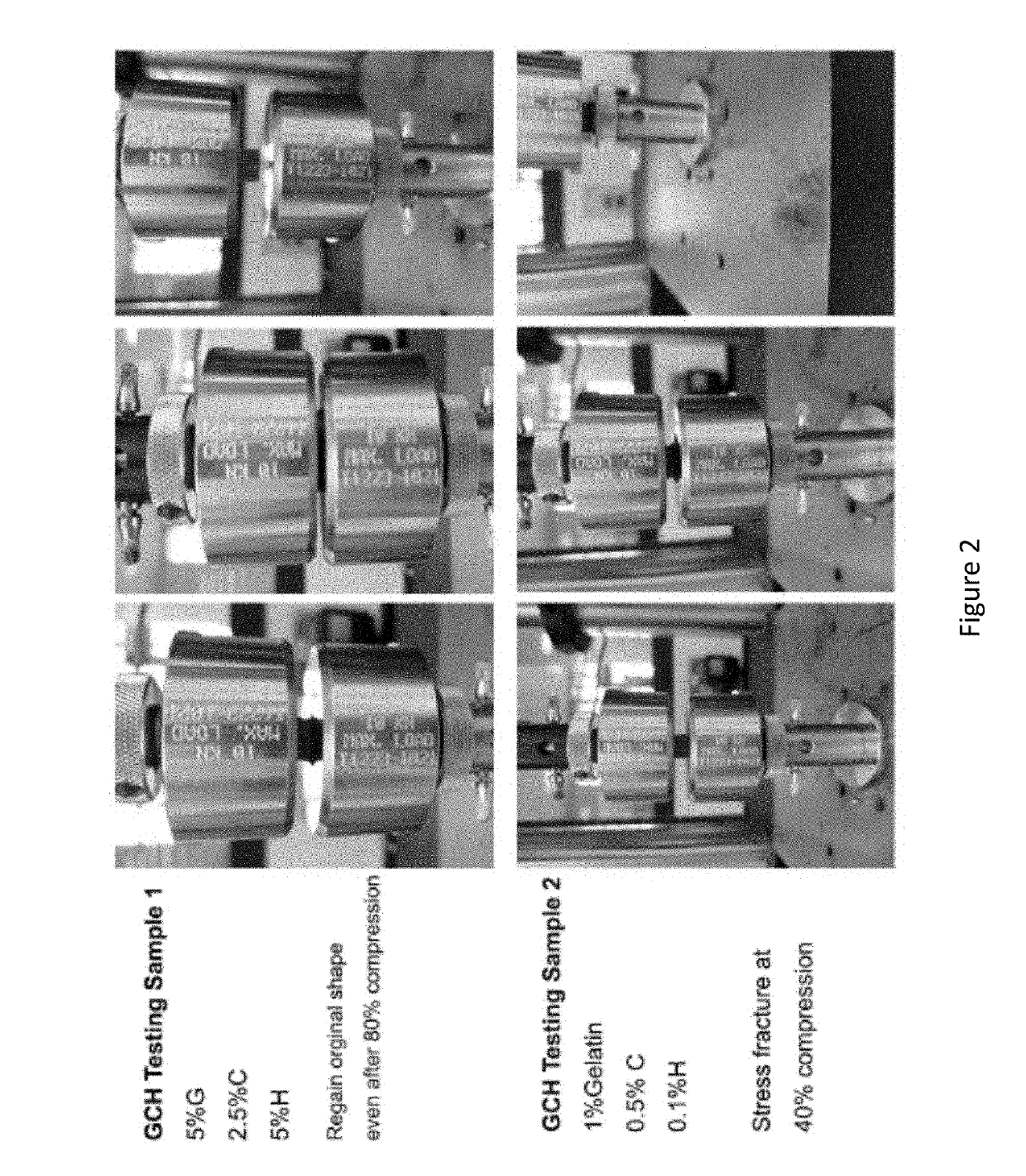Composition and methods for culturing retinal progenitor cells
- Summary
- Abstract
- Description
- Claims
- Application Information
AI Technical Summary
Problems solved by technology
Method used
Image
Examples
experimental examples
[0121]The invention is further described in detail by reference to the following experimental examples. These examples are provided for purposes of illustration only, and are not intended to be limiting unless otherwise specified. Thus, the invention should in no way be construed as being limited to the following examples, but rather, should be construed to encompass any and all variations which become evident as a result of the teaching provided herein.
[0122]Without further description, it is believed that one of ordinary skill in the art can, using the preceding description and the following illustrative examples, make and utilize the compounds of the present invention and practice the claimed methods. The following working examples therefore, specifically point out embodiments of the present invention, and are not to be construed as limiting in any way the remainder of the disclosure.
example 1
A Biodegradable Scaffold Enhances Differentiation and Enables Retinal Progenitor Cells to form a Planar Sheet
[0123]The compositions, methods and results presented herein, combine the best features of the retinal organoids and scaffolds. hESCs were differentiated into RPCs on a scaffold composed of gelatin, chondroitin sulfate, and hyaluronic acid (GCH), naturally occurring components of the retinal extracellular matrix (J. Kundu, et al, Acta Biomater., 2016, 31: 61-70). The cultures were suitable for forming a planar, laminated neo-retina and delivering partially differentiated RPE into the subretinal space of a mouse model of retinal degeneration. Further information regarding the data presented herein can be found in Singh et al. (2018, Biomaterials, 154: 158-168), which is incorporated by reference herein in its entirety.
Materials
[0124]Gelatin type A from fish skin was purchased from J. T. Baker (Phillipsburg, N.J.). Chondroitin sulfate, >90% was obtained from Alfa Aesar, Ward Hi...
example 2
Laminin 521 Promotes the Formation of a Planar Retinal Organoid
[0157]A scaffold that supports the differentiation of planar retinoids and rapidly degrades when implanted into the subretinal space is described herein. The scaffold is composed of chondroitin sulfate, collagen, and hyaluronic acid, which are naturally occurring components of the retinal extracellular matrix (Kundu et al. 2016). It has been demonstrated that this combination provides a niche that favored retinal differentiation over other cells of the anterior forebrain, but did not provide a uniform planar retinoid. To improve uniformity by increasing cell attachment, laminin 521 was tested, a major component of the retina's inner limiting membrane (Balasubramani et al. 2010; Pinzón-Duarte et al. 2010). Laminin 521 is also found in stem cell niches, where it promotes cell proliferation (Laperle et al. 2015; Polisetti et al. 2017). Because the retinoid is planar, the effects of co-culturing it with the RPE and its abili...
PUM
| Property | Measurement | Unit |
|---|---|---|
| Thickness | aaaaa | aaaaa |
| Electric charge | aaaaa | aaaaa |
| Dynamic viscosity | aaaaa | aaaaa |
Abstract
Description
Claims
Application Information
 Login to view more
Login to view more - R&D Engineer
- R&D Manager
- IP Professional
- Industry Leading Data Capabilities
- Powerful AI technology
- Patent DNA Extraction
Browse by: Latest US Patents, China's latest patents, Technical Efficacy Thesaurus, Application Domain, Technology Topic.
© 2024 PatSnap. All rights reserved.Legal|Privacy policy|Modern Slavery Act Transparency Statement|Sitemap



